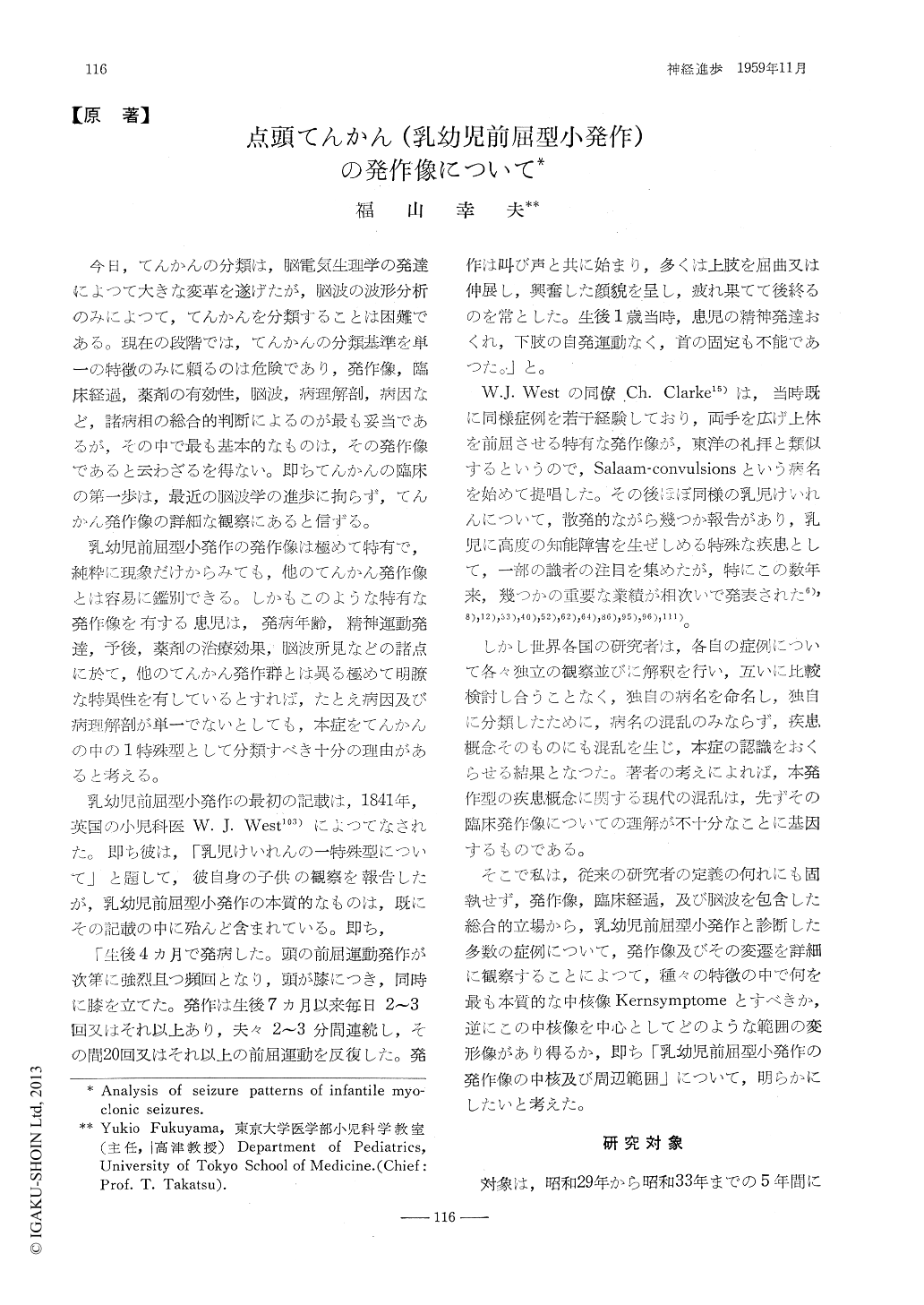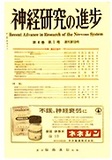Japanese
English
- 有料閲覧
- Abstract 文献概要
- 1ページ目 Look Inside
今日,てんかんの分類は,脳電気生理学の発達によつて大きな変革を遂げたが,脳波の波形分析のみによつて,てんかんを分類することは困難である。現在の段階では,てんかんの分類基準を単一の特徴のみに頼るのは危険であり,発作像,臨床経過,薬剤の有効性,脳波,病理解剖,病因など,諸病相の総合的判断によるのが最も妥当であるが,その中で最も基本的なものは,その発作像であると云わざるを得ない。即ちてんかんの臨床の第一歩は,最近の脳波学の進歩に拘らず,てんかん発作像の詳細な観察にあると信ずる。
乳幼児前屈型小発作の発作像は極めて特有で,純粋に現象だけからみても,他のてんかん発作像とは容易に鑑別できる。しかもこのような特有な発作像を有する患児は,発病年齢,精神運動発達,予後,薬剤の治療効果,脳波所見などの諸点に於て,他のてんかん発作群とは異る極めて明瞭な特異性を有しているとすれば,たとえ病因及び病理解剖が単一でないとしても,本症をてんかんの中の1特殊型として分類すべき十分の理由があると考える。
The author analyzed, in detail, seizure patternsof 215 cases of infantile myoclonic seizures inorder to define the central figure and its possiblevariations of this important group of infantileepilepsies.
Analysis of seizure patterns were performeddividing into the following elements.
(1) Muscle tone during seizures, e. g., Char-acter of muscle contraction.
(2) Direction of movement.-This is relatedwith posture of patients.
(3) Extent of bodily part involved in seizures.-This is related with the degree of strength ofseizures.
(4) Frequency and rhythm of seizures. As tomuscle tone, momentary spasms lasting only fewseconds were present in all cases (100%), butthere were some patients who in addition to thismomentary type, have other varieties of sei-zures ; 41 cases had few minutes-sustaining tonicseizures and 10 cases had atonic or akinetictype of seizures also.
By counting from comas of cinematographiesfilmed on 10 cases, it was demonstrated that totalcourse of one momentary spasm required a timeof 4.5 to 5.5 seconds, which was unexpectedlylong.
As to the direction of movement, the propulsive(bending forward) or flexion type was noticedin almost all cases (98.5%), demonstrating thatthe propulsive movement was the most distinctivefeature of infantile myoclonic seizures. But theretropulsive (bending backward) or extensiontype was noticed in 17 cases (12.2%), and alsothe type iniwhich the posture remain unchangedwas observed in 50 cases (36%).
Seizure patterns were more typical in casesunder two years of age than in older cases.
The author reviewed completely the historyof research on this type of epilepsies in Japan.Because there was no appropriate term existed,the author proposed to use commonly the newname-"flexor spasms of infancy"-as the.standard nomenclature.

Copyright © 1959, Igaku-Shoin Ltd. All rights reserved.


